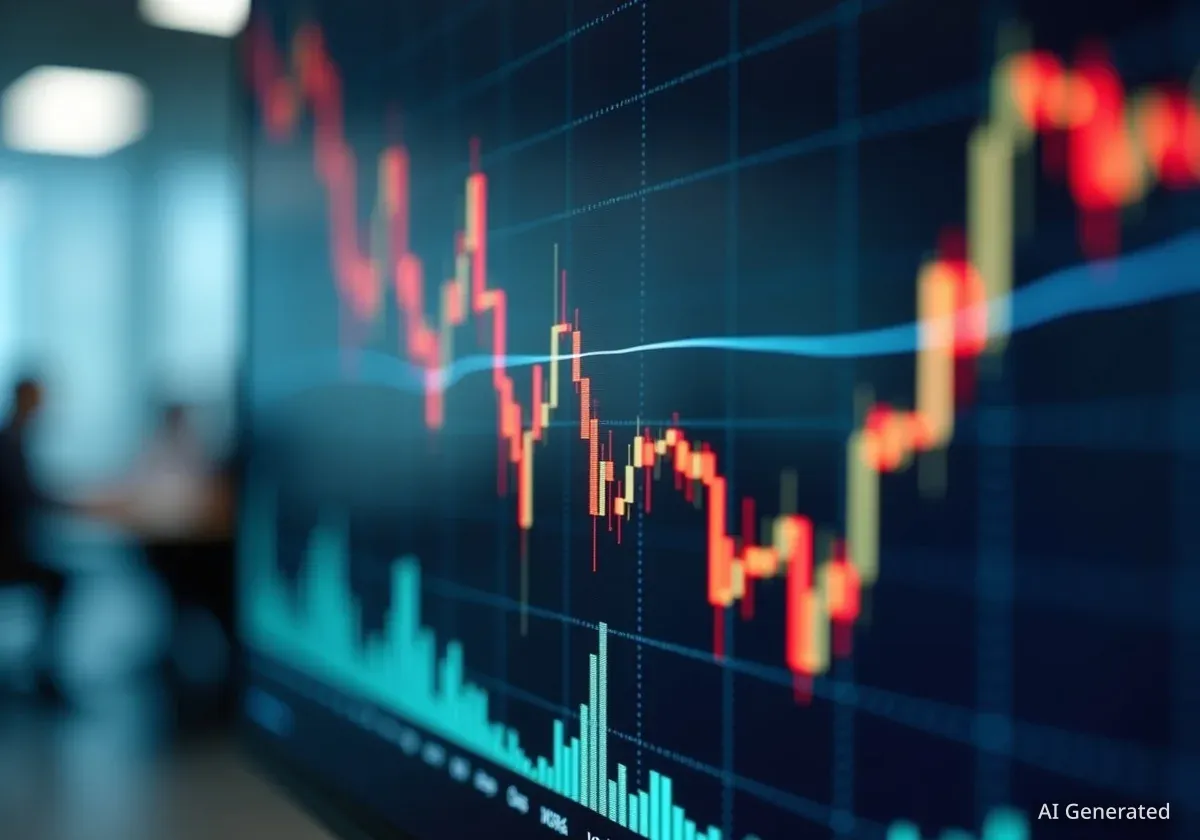Gold futures have recorded a significant 121% increase over the past three years, a performance that has surpassed the S&P 500 index's 71% gain during the same period. This substantial rise in value has been driven by persistent inflation and periods of stock market volatility, reinforcing gold's traditional role as a stable store of value and a safe-haven asset for investors.
Despite the strong performance, several key factors suggest that the precious metal may have further room for growth. Increased demand from central banks, potential shifts in investment fund allocations, and supportive technical indicators are creating a compelling case for holding or even increasing gold positions in the current economic climate.
Key Takeaways
- Over the last three years, gold futures have risen by 121%, outperforming the S&P 500's 71% gain.
- Central banks have accelerated their gold purchases since 2022, seeking to diversify reserves away from the U.S. dollar.
- Investment fund managers currently have low allocations to gold, indicating significant potential for future buying pressure.
- Some market analysts are forecasting that gold prices could reach $4,000 by next year, suggesting further upside.
Understanding Gold's Recent Performance
The surge in gold's value is not an isolated event but a response to global economic conditions. In a world shaped by post-pandemic inflation, investors have turned to gold to protect their purchasing power. When the value of currency erodes due to inflation, tangible assets like gold often hold their value more effectively.
Market volatility has also played a crucial role. During times of uncertainty in the stock market, investors often seek refuge in assets that are perceived as less risky. Gold has historically served this purpose, providing a hedge against downturns in equity markets.
Historical Context for Gold Rallies
While the 43% gain in gold over the past year may seem substantial, historical data provides a broader perspective. According to analysis from DataTrek, the typical price surge for gold during a rally, dating back to 1975, has been approximately 57%. This suggests that the current rally may not have reached its peak and could have more room to grow.
"We continue to like gold, even after its recent large gains, since the current investment environment remains conducive to more upside," DataTrek analysts noted, highlighting the various factors that continue to support the precious metal's price.
Central Banks Drive a New Wave of Demand
One of the most significant drivers behind gold's recent strength is the consistent and growing demand from the world's central banks. This trend began to accelerate in 2022, largely influenced by geopolitical events, including the conflict in Ukraine.
Following the decision by the United States and its allies to freeze Russia's U.S. dollar reserves, central banks in other nations began to reassess their own holdings. The event served as a powerful reminder of the risks associated with holding a large portion of national reserves in a single currency.
A Strategic Shift in Reserve Assets
Historically, U.S. Treasuries and the dollar have been the primary reserve assets for central banks worldwide due to their perceived stability and liquidity. However, geopolitical tensions have prompted a strategic pivot. By increasing their gold holdings, central banks are diversifying their reserves and reducing their dependence on the U.S. financial system, thereby insulating themselves from potential sanctions or political pressure.
This shift is not a short-term reaction but a fundamental change in reserve management strategy. As long as geopolitical uncertainty persists, central banks are likely to continue accumulating gold, providing a steady source of demand that supports higher prices.
Potential for Increased Investment from Fund Managers
Another key factor that could propel gold prices higher is the potential for increased allocations from commodity fund managers. Currently, investment in gold among these institutional players remains relatively low, which suggests there is significant capital waiting on the sidelines.
A recent fund manager survey from Bank of America revealed that the average portfolio allocation to gold is just 2.4%. The data also showed that more than a third of the surveyed managers hold almost no gold in their funds. For those who do have exposure, the average allocation is 4.2%.
"Bank of America strategists expect more managers to allocate a lot of money to it in the months ahead."
This low level of ownership indicates that the market is not yet overcrowded. If a larger portion of fund managers decides to increase their exposure to gold, even by a small percentage, the resulting inflow of capital could have a substantial impact on its price.
Future Price Outlook and Technical Support
Looking ahead, some analysts are bullish on gold's prospects. Michael Hsueh, a precious metals analyst at Deutsche Bank, has projected that gold could reach $4,000 by next year. While this represents a more modest 8% gain from its current level of around $3,700, it is still a strong potential return, especially when considering the risks of a slowing economy impacting the stock market.
The rally has also been technically well-supported. Over the past few years, the price of gold has consistently found buyers at its 200-day moving average, a key technical indicator watched by traders. This level, currently around $3,140, has acted as a strong floor for the price.
This consistent buying interest on price dips suggests that investor confidence in gold remains high. Traders appear to view any minor pullback as a buying opportunity, which helps to create a stable base for the price and supports the potential for future gains.
Given the combination of strong central bank demand, untapped investment from fund managers, and positive technical signals, the outlook for gold remains favorable. Despite its already impressive run, the precious metal appears well-positioned to continue its upward trend.





